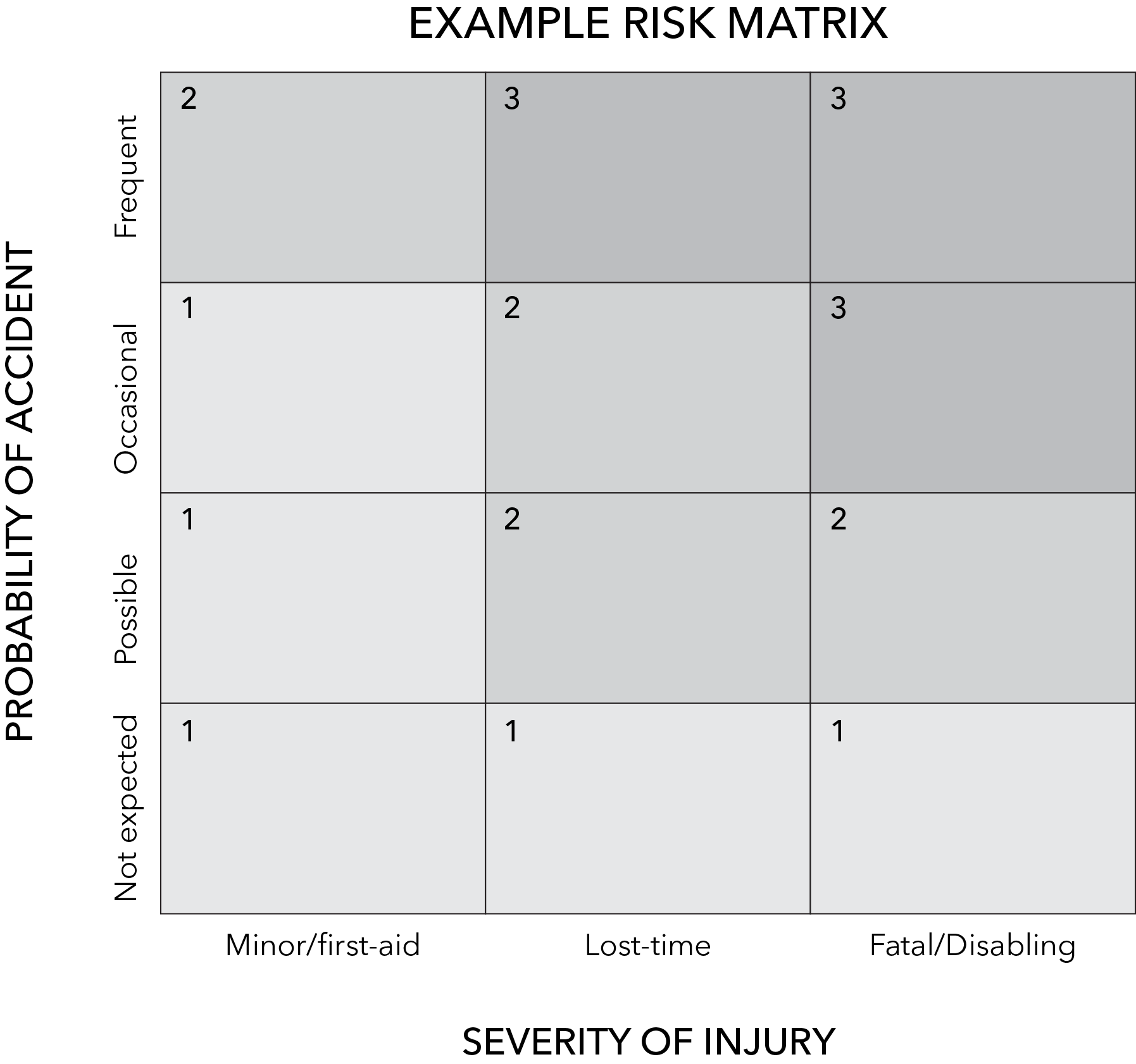Risk prioritization

- The risk/hazard rating of a job or task considers two factors, severity, and probability.
- When a job or task has a high probability and high severity it has the highest risk.
Most companies cannot address all hazards or needed improvements at the same time due to resource constraints. It is vital the employers assess and prioritize risk. The risk/hazard rating of a job or task usually considers two factors:
- Severity — The seriousness of the injury or illness (e.g., first-aid, minor, lost-time, permanent disability, fatality) that could occur should there be an incident.
- Probability — The likelihood that an incident will occur (e.g., frequent, occasionally, extremely unlikely).
When a job or task has a high probability and high severity it has the highest risk; when there is low probability and low severity that is the lowest risk. But there are numerous combinations of severity/probability in between. (Many companies utilize a risk matrix or table that assigns numeric measures to risk based on probability and severity; the ratings are used to prioritize safety efforts.)

When assessing probability, it is important to look at several factors, such as:
- How many workers are exposed,
- How often the workers are exposed to the hazard,
- How close the workers are to the danger zone or hazard, and
- Whether there have been accidents or near misses related to the hazard.
Some hazards will need to be controlled immediately before work can continue. In some cases, the hazard control may need to be an engineering control based on the nature of the hazard, its severity and probability, and likelihood that other controls will not be as effective. Some hazards the company just can’t take a chance with! For others, work practice controls or personal protective equipment (PPE) may be sufficient.
The key is not just to find hazards but to figure out the most effective and feasible control; it takes a little analysis and in some cases interim measures, but it is a crucial part of ensuring long-term, effective solutions.
